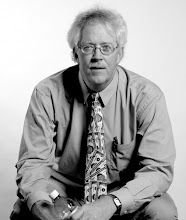This Summer I'm leading a three-week Travel Study program from Winona State University to the Navajo Nation. Because it is a big part of my life and such an important journey for the students, it will be a key factor in my blog for the next few weeks.
Each summer, the WSU Mass Communication department offers a summer travel course during which students study the mass media in unique locations and learn something of a diverse culture. Past WSU MassCom Travel Study programs have been in Paris, London, Rome, and last year I was pleased to go along to Cairo, Egypt.
More than three years ago I started planning an opportunity for mass communication students to learn in the field, working on real projects that showcase their skills and abilities. I've always had a fascination with American Indians of the United States. European immigrants to the U.S. were ruthless in their treatment of the indigenous people of North America. I can't take responsibility for what happened more than a century ago, but I can help make things better today.
Instead of visiting a foreign country, I thought it would be good for WSU students to get a better understanding of a unique culture that is very near-- within the borders of the United States.
The course I'm leading with my colleague Dr. Cindy Killion is called Media and Society International. The title fits because the Navajo Nation is a sovereign nation with its own government, law enforcement, schools, healthcare, language, religion and cultural values.
The course subtitle is: Documentary Journalism Partnerships: Navajo Oral History. A dozen Winona State students will work in teams with students from Diné College, the tribal college of the Navajo Nation. The student groups will interview Navajo elders and create journalism pieces that tell the stories of the elders.
Teams will decide the medium to use for their project: written word, still photographs, audio or video recordings, or any combination of the above in multimedia presentations. The finished pieces will become the property of the Navajo Nation and will be archived at the Navajo Nation Museum and Navajo Nation Library. The hope is that these projects will serve as the pilot for an organized oral history program recording and preserving the culture of the largest Indian tribe in the U.S.
The course has five main goals:
1.) Foster partnerships between WSU students and students from Diné College to learn from each other while completing documentary journalism projects.
2.) Immerse students in a culture they might not be exposed to through normal classroom learning.
3.) Provide students opportunities to practice and showcase MassCom skills and abilities.
4.) Inform and educate the public through publishing documentaries including social and cultural significance.
5.) Provide students opportunity to create portfolio quality work.
While on the Navajo Nation in Arizona, Utah and New Mexico, students will provide manual labor in service learning projects for the Navajo elders they'll interview. They'll camp one weekend at the site of a traditional Navajo sheep camp. They'll also camp near Anasazi ruins in Chaco Canyon. The group will enjoy a Navajo-guided horseback tour of ancient ruins, petroglyphs and pictographs along the walls of Canyon De Chelly.
When the journalism projects are finished, receptions are planned at both Diné College and Winona State University. The pieces will be published on the web, and if appropriate also on local cable television and in the Navajo Times newspaper and The Winona Daily News.
I'm proud of the project and know the students groups will do amazing work. I can't take all the credit, however. This program could not have been successful without the ideas and help of many people. I won't list them all here. Suffice it to say I am appreciative of all who supported this proran, including Diné College leaders, members of the Navajo Nation Human Research Review Board, my colleagues at Winona State University in the Mass Communication department and the Travel Study office.
I also recognize the help of a great group of communication experts and strategic thinkers who attended a Dialogue in the Desert Strategic Communication master class a couple years ago who really helped focus my thinking and planning.
Throughout the three-weeks of the program, while the students are documenting the lives of Navajo elders, I plan to document the student efforts and post updates to either this blog or on Winona360.org, a journalism site related to the WSU MassCom department.
Monday, May 18, 2009
Subscribe to:
Post Comments (Atom)

No comments:
Post a Comment